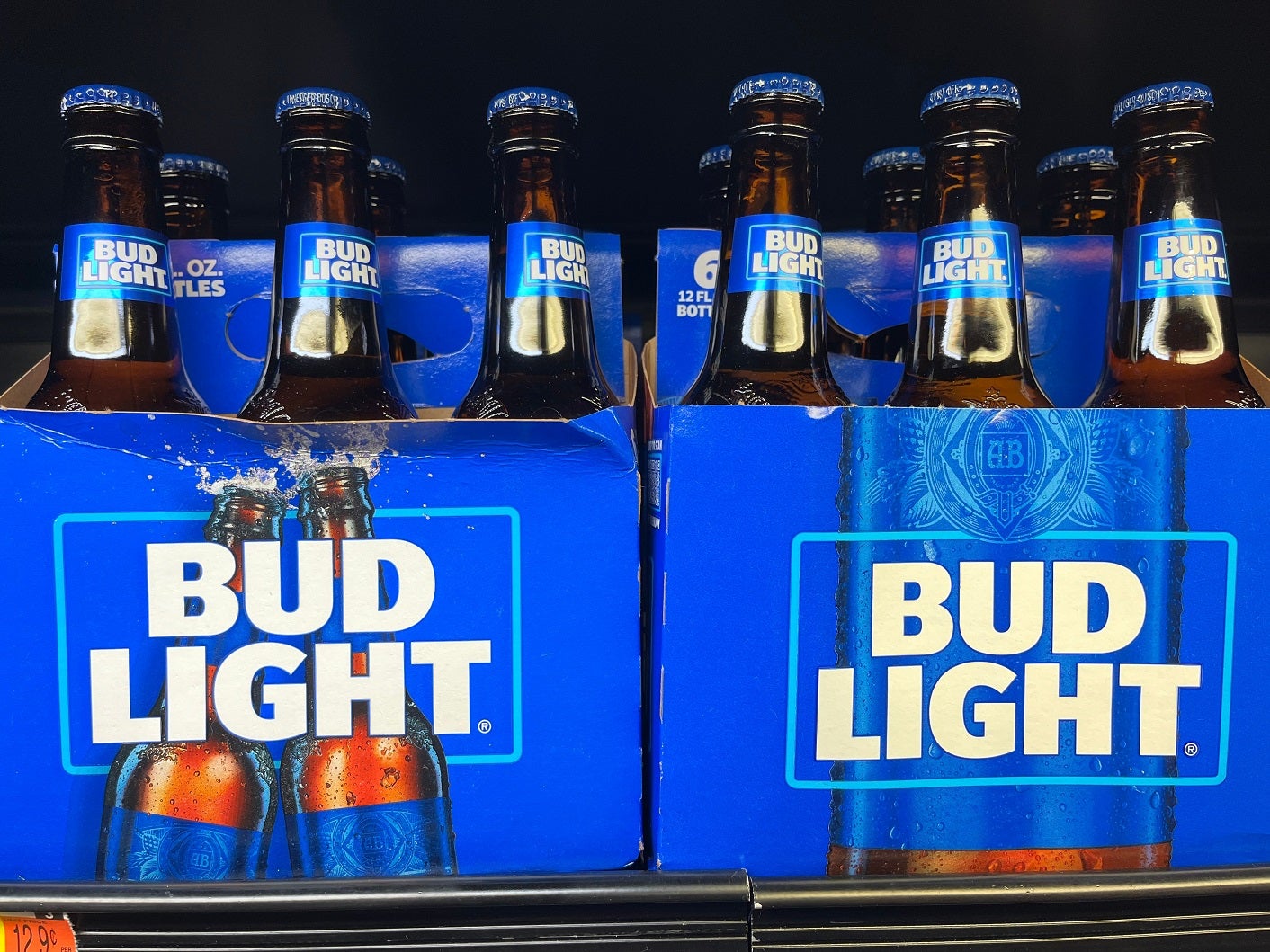
Anheuser-Busch InBev’s maligned Bud Light brand is showing “steady improvement” and “moving in the right direction”, CEO Michel Doukeris has insisted.
Speaking after AB InBev reported its third-quarter financial results – numbers that underlined the ongoing pressure on Bud Light sales after the Dylan Mulvaney controversy – Doukeris sought to underline reasons for optimism about the brand’s recent performance and outlook.
Doukeris pointed to “steady improvement” in Bud Light’s sales data and consumer research he said signalled drinkers’ willingness to buy the brand again.
“Considering the steady improvement and what we found on our latest research, that over 40% of lapsed Bud Light buyers declared that they are now ready to come back [and are] open to drink Bud Light again, this gives us some certainty that we are moving in the right direction,” he told analysts after AB InBev’s third-quarter numbers were released.
In the three months to the end of September, AB InBev’s volumes in North America fell by 17.1% on an organic basis. The consensus forecast among analysts was for a drop of 14.3%.
Third-quarter revenue was down 12.7% organically at $3.86bn versus the consensus forecast of a 10% decline.
In the US specifically, AB InBev’s third-quarter revenue declined 13.5%, although the Budweiser owner said revenue per hectolitre was up 4.9% “driven by revenue management initiatives”.
In the previous quarter – to the end of June – AB InBev’s revenue in the US dropped 10.5%. Revenue per hectolitre was up 5.2%.
Third-quarter sales-to-wholesalers declined by 17.6%. The fall was 10.5% in the second quarter. Sales-to-retailers were down by 16.6%, compared to a 14% drop in the second quarter.
The company said the third-quarter decreases were “primarily” due to lower Bud Light volumes and “shipment phasing ahead of our October price increase last year”.
AB InBev to continue Michelob Ultra push
Away from Bud Light, Doukeris said two other brands – Busch Light and Michelob Ultra – were regaining market share. “We expect these brands to recover their trajectory pre-April, which I think [is] only a fair assumption to consider,” he said.
In an investor presentation made in September, AB InBev promoted Michelob Ultra to its rank of “global brands”, alongside Budweiser, Stella Artois and Corona.
Doukeris believes Michelob Ultra is “very well aligned with an important global megatrend, which is around a healthier lifestyle and wellness”.
He indicated AB InBev plans to launch the beer in more markets. “This is a megatrend that you see present across the globe [and] pretty much all markets, from Latin America to North America to Asia, are showing an opportunity in this area,” he said. “The brand has very good momentum as well and we have plans now to continue to roll, choosing the most important countries where we want the brand to develop, where it can add to the portfolio as a core to us.”
“No impact” from GLP-1 drugs
On the call with analysts, Doukeris was asked for his view on how the increasing use of GLP-1 weight loss drugs could affect consumer habits in the US.
Growing demand in the US for drugs like Ozempic to suppress appetite and, as a consequence, lose weight, is causing some concern among investors in food and drinks companies, including in beverage alcohol groups.
The AB InBev chief said the “very limited” data available means it is “too early to assess any overlap or change in behaviour”.
He added: “For us, we don’t see any impact so far in the business. Our portfolio has several different options for socialisation and consumers understand that. The big distinction is we are not in the indulgence business. You see a lot of the conversations around sweet and more things that are related to indulgence, which is not the case in our portfolio.
“And, on top of that, we have an incredible range of offers with low calorie, low-carb, non-alcohol. We have a portfolio that has a broad range. We see no reasons to make any consideration at this point and I think that, without more data and seeing the developments of this, it’s going to be more speculation.”
AB InBev’s group-wide revenue increased 5% on an organic basis in the third quarter to $15.57bn. The consensus forecast was for growth of 4.7%. Revenue per hectolitre was up 9%. AB InBev said revenues grew in around “80% of our markets”.
Volumes fell 3.4%. Growth in the brewer’s “Middle Americas”, Africa and APAC divisions was offset by its performance in the US and “a soft industry” in Europe.
AB InBev reported a “normalised” EBIT of $4.03bn, which amounted to a 2.7% rise organically although compared to $4.06bn a year earlier.
Profit attributable to equity holders stood at $1.47bn, against $1.43bn in the third quarter of 2022.
AllianceBernstein analyst Trevor Stirling described AB InBev’s third-quarter results as “solid”.
He added: “This set of results will reinforce why investors’ focus should shift away from an obsession with the Bud Light recovery in the US. Despite a -17% hit to US volumes in Q3 and revenues down -13% in their largest market, ABI delivered organic volume growth of -3% and revenue growth of 5%. EBITDA beat expectations, up 4%. The performance was flattered by Argentinean hyperinflation (circa 3%) but nonetheless impressive.”



